Click to view our Accessibility Statement or contact us with accessibility-related questions









Anatomy of a Mechanical Keyboard

search
close
Sort by: Newest
keyboard_arrow_down
Yulian
14
Jul 14, 2019
(Not sure if my last post went through). Great article, really helps get an idea of how to make something custom. I have been holding off on mechanical keyboards since majority of them don't have flat/chiclet/low-profile keys, and thats what I prefer, flat laptop style keys. Luckily its starting to gain some traction. I kickstarted the Hexgears X-1 and its been great. Coolermaster I think now makes a low profile mechanical in all 3 main sizes (full, tkl, and 60%). As more parts and stuff comes out for it, I plan to make a custom mechanical keyboard finally.
philippeback
0
Jul 14, 2019
Cool. Albeit not as extreme, I have quite a couple of mechanical keyboards. The key factor in picking one or the other is how much it would inconvenience coworkers when on site. In my own office, yeah, very clicky stuff rules.

ZenAtWork
7
Keyboard Club Member
Oct 22, 2018
Outstanding work! I've been looking for a good diagram of switch types for a long time! Imposter? No more!

Kevnwin
766
Vendor Services
Oct 11, 2018
That was a great read, thanks! I've been into mechs for a while but I only knew the basics and bought premade boards.
Since joining MD, now, I'm learning more about different keycaps, artisan caps and trying different layouts. It's all downhill from here!
Since joining MD, now, I'm learning more about different keycaps, artisan caps and trying different layouts. It's all downhill from here!
Showing 19 of 25
PRODUCTS YOU MAY LIKE
Trending Posts in Mechanical Keyboards
nienow.donny
Chill Out with Fun: Dive into Papa's Freezeria Game!
Are you ready to take a break from reality and indulge in a delicious virtual ice cream adventure? Welcome to the sweet world of Papa's Freezeria! In this delightful game, you'll transform into a master ice cream chef, serving up yummy concoctions to your quirky customers while managing your very own ice cream shop. Grab your aprons, unleash your creativity, and get ready to scoop, blend, and serve! What is Papa's Freezeria? Papa's Freezeria is a fun-filled cooking simulation game where players run an ice cream parlor by preparing and serving delicious treats. From building the perfect sundae to creating refreshing milkshakes, this game brings the art of ice cream making right to your fingertips! But hold on—having fun isn’t just about tasty flavors; it’s also about mastering the art of multitasking and keeping your customers happy. How to Play: Your Guide to Delicious Success! Step 1: Get Started Getting started is easy! You can choose between various characters, each with their...
Dec 30, 2024
MoreBlcvk
Can i someone support me in fixing my Drop Alt keyboard?
I havent used this keyboard in months. When I plug it in, it turns on and turns off. You would assume there is a short in the cord but I know there's not because I can use the cord with a different keyboard. So do you think its a firmware issue or a short inside the keyboard? Either way I want to fix it. Any suggestions or tips & tricks?
Dec 29, 2024
CapnKitten
Solid ABS Keycaps
DCX quality is pretty good. Similar sound signature and a smoother texture to GMK. Not a dig at either, just a difference. Ignore the missing keycap, it's a switch issue.
Dec 29, 2024
AlexDuality
Two weeks without parcel update after it shipped?
Hello, I'm not sure where to ask for this so I'll try here. I ordered a Rohan Keyboard+Mousepad 2 weeks ago, on the 12th of Dec. I received an e-mail saying it was shipped on the 15th so, pretty fast. But ever since then, no news. The last update on the DHL tracking website says "PROCESSING COMPLETED AT ORIGIN" on the 18th, which was more than a week ago - Google tells me that it means "parcel left the country of origin" (i'm ordering from France). I've tried asking customer support if they could track it down or give me at least a broad estimate of when I ought to expect it, but no answer so far. I understand shipping might take some time with the holidays and all, but if it was shipped around two weeks ago, shouldn't it have arrived by now? And whats up with no parcel updates for ten days? Sorry if I asked in the wrong place, with no customer support answer I'm kinda getting worried.
Dec 27, 2024

excelsiorcarslondon
Why Cab Service Near Me is Essential in Today’s Fast-Paced World
In today’s world, convenience is key. Whether you're commuting to work, heading to an important meeting, or enjoying a night out, having access to a reliable london city airport transfers is indispensable. Companies like Excelsior Cars London are redefining what it means to travel conveniently and efficiently. The Importance of Local Cab Services When you're in a hurry or unfamiliar with your surroundings, searching for a “cab service near me” can be a lifesaver. Local cab services bridge the gap between affordability and reliability, providing quick solutions for transportation needs. Unlike app-based ride-sharing platforms, traditional cab services often offer: Instant Availability: No long wait times during peak hours. Knowledgeable Drivers: Drivers familiar with local routes and shortcuts. Personalized Service: A customer-focused experience that prioritizes your comfort. Excelsior Cars London, for example, ensures passengers experience stress-free travel with their fleet of...
Dec 27, 2024


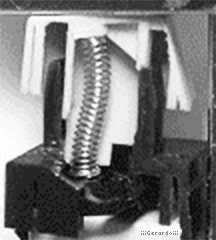


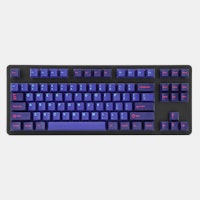
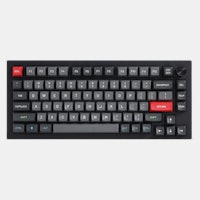
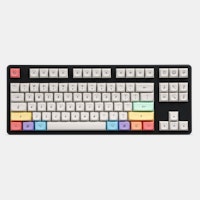
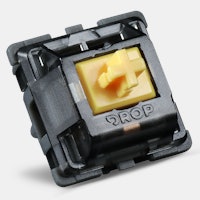

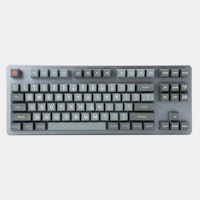
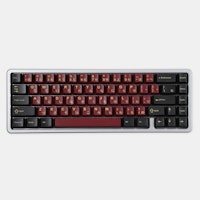
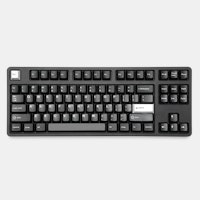
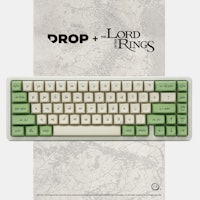





You can find me on Twitter @isabelacmor talking about keyboards, tech, and design.
About me
I signed up for a computer science class my junior year of high school. Towards the end of the class, my teacher told me I should sign up for the high school programming team competition. I thought "there's no way I'm qualified for that..." (at the time, I had no idea what imposter syndrome was). But I signed up anyway. The day of the competition, I was actually shocked to see how few girls there were. I never really knew about the gender disparity in the field until that moment. We placed somewhere around top 5 and I was invited to come back the following year, which I did.
When I started college, I debated back and forth about whether I should go to the collegiate programming team tryouts. Even though I had experience with competitive programming, I still didn't feel like I belonged. But I went anyway. I actually made the junior varsity team and went on to compete and place in various ICPC competitions.
All throughout college, I had applied for internships at big tech companies. I'd gotten several offers for each summer, but I had never gotten an offer from Microsoft. The second year I interviewed with them, I actually had gotten a call back almost immediately saying I "didn't have the technical skills we require of software developer interns. Maybe program management would be more up your alley?" I politely declined, but it really hit my confidence. Maybe I didn't know the first thing about the tech world after all? When it was finally time to apply for full time positions, I wasn't sure if I was going to get in. But I applied anyway.
I've been a software engineer at Microsoft for two years now and my journey into mechanical keyboards started about a year ago.
I was hosting a party and had invited my friend Cassidy Williams. We got around to talking about some new keyboard she had recently bought and I finally told her - "Give it to me straight... what's the big deal about mechanical keyboards?" Little did I know, she carries around a presentation on her phone explaining just that. I was sold, but I definitely didn't want to spend more than $100 on a keyboard (little did I know...). I settled on a Vortex Pok3r and it's still one of my go-to boards. But since that day, I've learned so much more about mechanical keyboards but I also had a lot of questions along the way. There's so many details I wish I would have known about before venturing into this hobby, but I couldn't find a lot of good beginner-level resources that didn't overwhelm me.
Despite how little knowledge I had when I first started the hobby, I decided to join Cassidy at the Seattle Mechanical Keyboard meetups, hosted by cKeys. I found the community to be so nice and inclusive, which is something that I hadn't really experienced before as a woman in tech.
When Branden Byers from cKeys approached me before the Summer 2018 SMK meetup and asked me to give a beginner-level talk on mechanical keyboards, I was a bit overwhelmed. This would have been only my third meetup and the meetup itself had been growing so quickly, it was actually being hosted at a newer, much larger venue. But I thought, if I don't give this talk, who will? While I still get waves of imposter syndrome, I've learned that it's important to be confident enough in who you are to take risks.
A beginner-level talk was something I had so deeply wanted when I was first starting in mechanical keyboards and "you have to be the change you want to see in the world" or something like that. So I agreed to talk and set to work on the talk. Of course, I still had imposter syndrome and couldn't imagine that I had enough experience to be talking about how mechanical keyboards work. But I think that my being so fresh to this hobby played out to my advantage. My audience for the talk was me about a year ago and I think that perspective really helped me stay focused on a talk that would be super easy to understand.
So let's dive in!
Anatomy of a Mechanical Keyboard Rubber domes
Before we even talk about mechanical keyboards, it's important to get a quick overview of how a "normal" keyboard works so we can look at the differences.
How is this different from mechanical keyboards? What's even the big deal about mechanical keyboards? Well, for starters, mechanical keyboards are a work of art! They come in all shapes and sizes and are highly durable and customizable. They feel great to type on and use a special mechanism to send the key press signal to the computer.
Mechanical switches
Instead of rubber, switches in mechanical keyboards are made of actual mechanical, moving parts. These switches are soldered directly onto the circuit board, instead of hovering over the circuit board like the metal contact in the rubber dome.
There's a variety of different brands and kinds of mechanical switches, which we'll get to later, but all mechanical switches have the same basic components - a leaf spring, a slider, and a spring. All three sit inside the switch housing. Outside the switch housing is the switch's stem, which is what connects the switch to the keycap.
In order for the circuit to close, this leg needs to move out of the way so the two pieces of metal can touch. This happens when the slider moves down far enough within the switch housing. When this happens, the leg on the slider no longer separates the leg on the leaf spring with the straight metal bit and the signal gets sent to the computer. When the slider is released, the spring sitting under the slider pushes the slider back up and so the slider's leg opens the circuit back up.
Since you need to compress the spring enough to move the slider down and close the metal gap, you can customize the feel of the keyboard even more by changing what kind of spring your switches use. Springs that are more difficult to compress create a category of switches called heavy switches, because you need a lot of force to press down on them. Similarly, there's a category of switches called light switches because they need less force. You can tell how heavy or light a switch is by looking for its actuation force on whatever website you're buying switches from. This will tell you how many grams of force are needed to complete the circuit.
Types of mechanical switches
Now that we've covered how mechanical switches work, there's several different types of switches that feel different. It's a really personal decision which switches you get and it can be handy to get a switch tester (basically a numpad-sized thing that holds a bunch of different switches) or go to your local keyboard meetup ;).
- Tactile - you can feel a bump when you press down, but it's completely quiet.
- Tactile and clicky - the stereotypical click clack sound. You can feel and hear a bump when you press down.
- Linear - no bump or sound. It's completely smooth all the way up and down.
You can tell what kind of switch you have just by looking at the internals too. If the slider's leg has no bumps, it's a linear switch. If it has a bump, it's definitely a tactile switch, but that doesn't necessarily mean it's clicky. In order for it to be clicky, it needs to have a floating middle part. This floating part will actually hit the bottom of the switch housing when the switch is pressed and that's what make the clicking sound. In each of the categories above, you can get switches with different actuation forces. For example, if you wanted a tactile switch that's on the heavier side, you could get MX Clears. If you wanted something lighter, you could get MX Browns instead.PCB
- QMK: https://github.com/qmk/qmk_firmware/
- TMK: https://github.com/tmk/tmk_keyboard/
- Kiibohd: https://github.com/kiibohd/controller
- EasyAVR: https://github.com/dhowland/EasyAVR
Other boards, like those made by Vortex, while still good boards, don't run on customizable firmware and the only way to program them is through various key combinations on the board itself, which can get annoying, or have various limitations on which keys can be programmed.Plate
Case
Keycaps
Keycaps are mostly cosmetic but they can actually change the way you type and the kind of feeling you get from your board. Just like switches, there's a whole bunch of different types of keycaps. They're usually differentiated by their profile and material.
Keycaps are usually made from ABS or PBT plastic, although most artisans are made of clay or resin. PBT is usually considered better than ABS because they don't wear as easily, don't show shine from oily fingers, and don't yellow. Another thing that makes a big difference in the quality of keycaps is how the legends on the caps are done. They can either be printed on or they can be doubleshot. You can see the blue and green keycaps in the pictures are doubleshot because they have an extra layer of plastic that makes up the actual legend - that's the black and white striped-looking layer. The rest of the keycap plastic is then filled in around the legend plastic. This makes the legends much more durable because you know they can never wear off. But if you have printed legends like the white cap, it's just a matter of time before they wear off.
You also have to make sure that the keycaps you get match the stems of your switches. Alps switches, MX switches, and Topre switches all have different stems and can't share keycaps. Usually, most of the popular keycap sets are sold with MX stems.
End game
Once everything's assembled (or purchased assembled and in your hands), you'll end up with a beautiful 100% customized board and you'll actually know how it works inside and out! It'll be everything you've ever wanted.... until the next board you get.